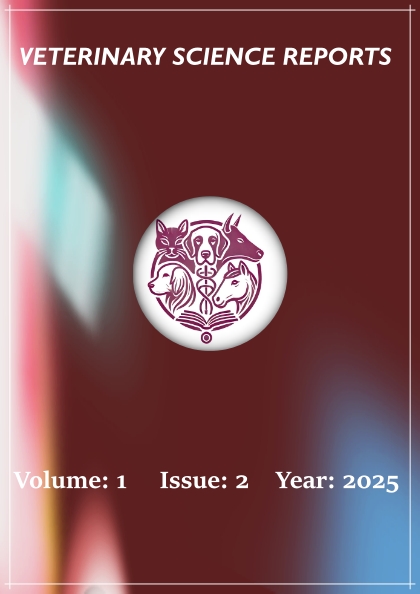Comparative Pelvic Morphometry of Male and Female Second-Trimester Anatolian Hair Goat (Capra Hircus) Fetuses
DOI:
https://doi.org/10.5281/zenodo.17347284Keywords:
Fetal development, Hair goat (Capra hircus), Pelvic morphometryAbstract
This study aimed to investigate pelvic morphometric parameters in second-trimester anatolian hair goat (Capra hircus) fetuses and to compare them between sexes. A total of 14 fetuses (7 females and 7 males) were examined. The crown–rump lengths (CRL) of the fetuses were measured, and gestational ages were estimated using reference tables reported in the literature. Following dissection and isolation of the pelvis, surrounding soft tissues were removed, and the main pelvic parameters were measured using ImageJ software.
The evaluated parameters included vertical diameter (diameter verticalis, VD), transverse diameter (diameter transversa, TD), diagonal conjugate (conjugata diagonalis, DC), tuber coxae width (distantia coxarum, CT), acetabular diameter (diameter acetabuli, AC), narrowest transverse diameter (diameter transversa minor, TDNP), and pelvic length (longitudo pelvis, PL). The results revealed that TD, TDNP, and PL values were higher in female fetuses, whereas CT values were greater in males. No significant sex-related differences were observed in DC and AC parameters. These findings indicate that sex-related morphological differences in the pelvic structures of anatolian hair goat fetuses begin to emerge during the second trimester. The data obtained from this study are expected to contribute to a better understanding of goat embryology and prenatal skeletal development, to provide insight into the evaluation of birth canal formation in obstetrics, and to serve as a valuable reference for future comparative anatomical and morphometric studies.
Downloads
Published
How to Cite
Issue
Section
License
Copyright (c) 2025 Zahid ATLI

This work is licensed under a Creative Commons Attribution 4.0 International License.



